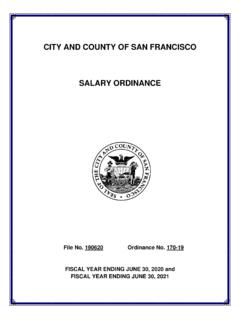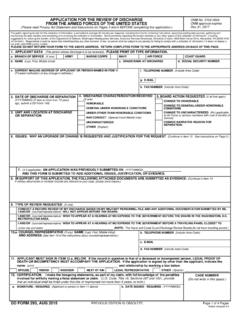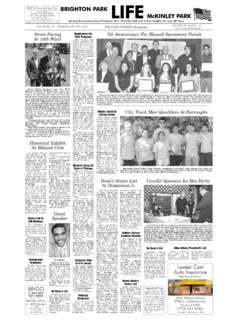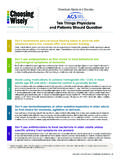Transcription of Hotel Room Tax - sfcontroller.org
1 _____ City and County of San Francisco Controller s Office Page 1 of 6 Hotel Room Tax Description The Hotel Room Tax (or transient occupancy tax ) is a 14 percent tax levied on Hotel room charges. The tax is collected by Hotel operators from guests and remitted to the Treasurer/Tax Collector. Many local governments impose this tax to recover some of the costs of governmental services associated with nonresidents. When the Hotel tax was introduced in 1961, the tax rate was 6 percent, and it has increased incrementally to the current rate of 14 percent, established in August 1996.
2 Authorizing Statute(s) Article 7, Sections of the Business Tax and Regulation Code (Municipal Code). Annual Appropriation Ordinance Administrative Provisions (FY 2003-04, Sec. , FY2004-05, Sec. , FY 2005-06 Sec ). Amount & Allocation Hotel Room Tax revenues are cyclical and dependent upon economic activity, including convention bookings, business travel and tourism. As illustrated in the table below, Hotel Room Tax revenue grew rapidly up until FY 2000-01. During the 1990s, total Hotel Room Tax revenues nearly tripled.
3 Since FY 1978-79, this single source of revenue has grown from $ million to $ million budgeted in FY 2013-14. ($ millions) Total Hotel Tax Revenue All Funds $ Change % ChangeFY 1998 1999 2000 2001 2002 2003 2004 2005 2006 2007 2008 2009 2010 2011 2012 FY 2013 Growth_____ City and County of San Francisco Controller s Office Page 2 of 6 The economic downturn that began in late 2000 and early 2001 resulted in a steep decline in business travel, causing occupancy rates in the Financial District in particular to decline.
4 Compounding that downward pressure, the September 11th attacks caused a sharp decrease in air travel and related tourism, exacerbating sagging occupancy rates and triggering steep discounting in average daily room rates. In FY 2001-02, Hotel room tax revenue declined by percent from the prior fiscal year. A gradual recovery led revenue to reach its prior peak of $ million in FY 2000-01 in FY 2006-07 and higher budgeted revenues in FY 2007-08. Recent revenue performance has been due large part to increased average daily room rates, attributable in part to strong convention bookings and international tourism.
5 Collection Method & Issues Hotel Room Tax is collected by Hotel operators from guests and remitted to the Treasurer/Tax Collector according to rules established by the Treasurer/Tax Collector. An operator who fails to collect the Hotel room tax from guests will be liable to the City for all unpaid taxes. All operators must file quarterly Hotel room tax returns according to the schedule below and must make prepayments each of the first two months of the quarter. _____ City and County of San Francisco Controller s Office Page 3 of 6 Quarterly Hotel Room Tax Return Filing Schedule Quarter Due Date Delinquent On Jan-Feb-Mar April 1-30 May 1 Apr-May-Jun July 1-30 August 1 Jul-Aug-Sep October 1-30 November 1 Oct-Nov-Dec January 1-31 February 1 The Hotel operator may choose to remit actual monthly taxes due or make prepayments for the first and second month of each quarter equal to 30 percent of the tax liability from the immediately preceding quarter.
6 As calculated by the Treasurer/Tax Collector. Due dates are shown in the table below. Hotel Room Tax Payment Schedule Month Due Date Delinquent On January February 1-28 March 1 February March 1-31 April 1 March (1st quarter clean-up) April 1-30 May 1 April May 1-31 June 1 May June 1-30 July 1 June (2nd quarter clean-up) July 1-31 August 1 July August 1-31 September 1 August September 1-30 October 1 September (3rd quarter clean-up) October 1-31 November 1 October November 1-30 December 1 November December 1-31 January 1 December (4th quarter clean-up)
7 January 1-31 February 1 Tax/Rate Structure At its introduction in 1961, the Hotel Room Tax rate was percent, and has increased incrementally to the current rate of percent, established in August 1996. Hotel Room Tax Rate History Effective Dates Rate August 1961 through June 1978 July 1978 through June 1980 July 1980 through December 1986 January 1987 through August 1993 August 1993 through July 1996 August 1996 to date _____ City and County of San Francisco Controller s Office Page 4 of 6 San Francisco s Hotel Room Tax rate is on the upper end of the tax rate spectrum.
8 The table below summarizes a survey of Hotel Room Tax rates that the Controller s Office conducted in October 2003 of the 10 largest cities in California as well as San Francisco s neighboring cities. Exemptions Guests who occupy a Hotel room for 30 consecutive days, such as many Single Room Occupancy (SRO) residents, are exempt from paying the tax, as are guests in dormitory-style arrangements who pay under $30 per day or $100 per week. Employees of nonprofit organizations and government agencies are exempt when travelling on business if charges are paid by the employer.
9 Foreign diplomatic and consular personnel and their dependents are exempt as well. Trends & Projections Three factors directly affect Hotel Room Tax revenue: (1) average daily room rates (ADRs), (2) occupancy rates, and (3) the overall supply of rooms. Today the total number of rooms generating Hotel room tax revenue is approximately 33,000. The tables on the next page summarize overall trends by fiscal year for ADR and occupancy rates for San Francisco. Average annual occupancy levels have tracked economic trends, dipping in the early 1990s to 66 percent, and reaching an all-time high of percent in FY 2012-13.
10 Prices have rebounded from aggressive discounting begun during the most recent economic downturn in FY 2008-09 and posted double digit average increases for three consecutive fiscal years. As a result of these strong increases in occupancy and average room rates, ADRs have increased from $73 back in 1980 to a high of $180 in FY 2012-13, with a particularly steep rises form fiscal years 2011 -12 through 2012-13. Hotel Room Tax - Rate Comparisons10 Largest California CitiesPopulation[1] Tax Rate[3]Neighboring CitiesTax Rate[3]Anaheim328,014 Angeles3,694,820 Francisco776,733 Beach461,522 ,652 ,018 ,484 Diego1,223,400 Jose894,943 Ana337,977 (Mean) of 10 Largest (Mean) of Neighboring of Largest of Neighboring Data & Notes[1] 2000 Census Data from CA Dept.














